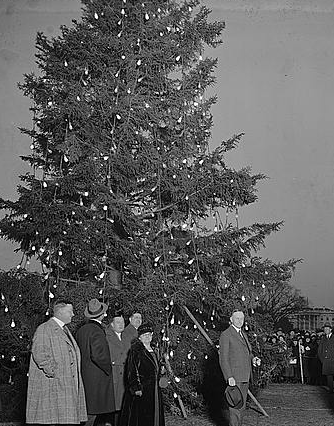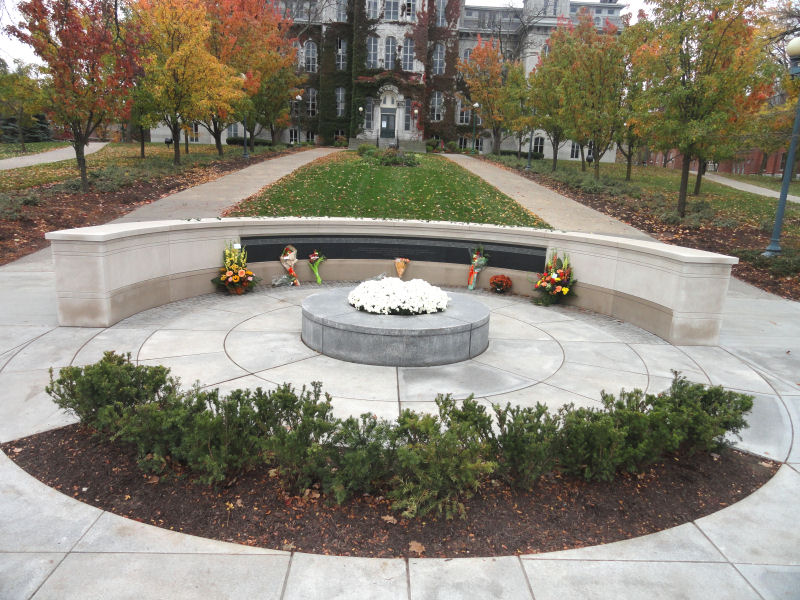The events that took place on December 14, 2012, at the Sandy Hook School in Newtown, Connecticut, strike at the heart of us all. So many lives taken, so close to Christmas and none of it makes much sense. Among the dead are the six-year-old daughter of Jeff Previdi, a Bethany College Beta Theta Pi, the six-year-old son of Colgate University Pi Beta Phi Cynthia Radley Mattioli, a son of a Kappa Kappa Gamma alumna, the six-year-old daughter of Pi Kappa Phi Rich Rekos, and Lauren Rousseau, an alumna of Pi Beta Phi’s chapter at the University of Connecticut. Rousseau had just been hired on as a permanent substitute and was having “the best year of her life.” Another UConn alumna, Kappa Kappa Gamma Kaitlin Roig-DeBellis, a first grade teacher at Sandy Hook, protected her 15 students by hiding them in a bathroom. (See the Spring 2013 Key of Kappa Kappa Gamma)
Newton, Connecticut, is the town in which my husband worked when we were first married. How wonderful it would have been had we been able to reside there and raise our family there. Newtown would have remained just one of those quaint New England towns, with a green and a flag and the wholesomeness of a Norman Rockwell painting had it not been for what took place at the Sandy Hook Elementary School on December 14, 2012.
The senseless of it all brings me back to another New Englander. Born in Vermont and a resident of Massachusetts for most of her adult life, Grace Coolidge’s most devastating and public sorrows took place after she and her husband moved to the White House.
July 7, 1924 was likely one of the worst days of Grace and Calvin Coolidge’s life together. Their youngest son, Calvin, Jr., died at the age of 16. On June 30, he had played tennis on the White House court. He wore tennis shoes, but for whatever reason, he did not wear socks. After playing against his brother John, he developed a blister on his right foot. The blister tuned into blood poisoning. Drugs to combat the infection were not yet available.
The young Calvin was a student at Mercersburg Academy in Pennsylvania. When his father became President of the United States after Warren Harding’s death, Calvin, Jr. was working in a Massachusetts tobacco field. Another young worker remarked to him, “If my father was President, I would not work in a tobacco field.” Calvin, Jr. replied, “If my father were your father, you would.”
In a July 1932 letter to her son John, now in the collections of the Calvin Coolidge Memorial Foundation, Grace Coolidge described the dreadful day:
I leaned over his bed knowing that he was fast slipping beyond the reach of my voice, perhaps even then would not hear, and I said, ‘You’re alright, Calvin,’ as I said so many time in the days when he was in trouble about some little matter. Without opening his eyes, he nodded his head, ever so little and the flicker of his old smile came and was gone. Then, they began giving him oxygen and kept his heart beating but his spirit had slipped away. All that afternoon, dark, awe-inspiring clouds had rolled across the sky, the lightening was almost constant and thunder followed it in mighty roars of majestic power. Calvin’s delirium seemed to be a part of it all and, for a long time, he seemed to be on a horse leading a cavalry charge in battle. He called out, ‘Come on, come on, help, help!’ And, for a time, he thought he was sitting backwards on his horse and asked us to turn him around. Father put his arms under him and tried to persuade him that he had turned him but he thought he was still wrong side around. Finally he relaxed and called out, ‘We surrender, we surrender!’ Dr. Boone said, ‘Never surrender, Calvin.’ He answered only, ‘Yes.’ And some how I was glad that he had gone down still fighting. After it was all over, Dr. Coupal broke down and cried. I found him at the window and I put my arms around him and told him that everything was alright that he and the other doctors had done everything within their power and we must comfort ourselves with the thought that courage such as Calvin had shown us all must now be our example.
His casket was taken by train from Washington to Northampton for services at Edwards Congregational Church. From there the train continued to Ludlow, Vermont. The last 12 miles were in a car with a cavalry escort to Plymouth and the Coolidge homestead. Boy Scouts holding roses stood at the last third of a mile. After the service, they placed the roses on the grave.
It is said that when Calvin, Jr. died, his father suffered deeply and sorrowfully. Grace Coolidge, her heart broken, carried on almost as if she thought it was her duty.
Grace, a charter member of Pi Beta Phi’s Vermont Beta Chapter at the University of Vermont, had a group of Pi Phi friends with whom she kept in contact with a Round Robin letter. After her son’s death, she wrote her Round Robin friends addressing them as “Dear Robins on the Wing.” She then wrote:
I thus address you feelingly and enviously because you all can come and go as you will. When I wrote the word I was looking out the window and wishing I could steal away without being seen and have one day unaccompanied just to go about unrecognized all by myself. The poor Prince! Someday I will again be a humble citizen while he can never be just himself….I want to say a word in appreciation of all your kind words of sympathy. I did not try to reply except by the little card but knew you would understand. I knew that the Robin would come along before a great while and that I could then tell you how deeply I felt your loving sympathy. No longer can we see and touch Calvin but in a very real sense he is with us and has his place in our family circle. Two years ago this year he taught me how to swim – not because I wanted to learn but just because he wanted to teach me. He put his hand under my chin and I just had to do my best to please him. I’ll never forget how happy he was when I took a few strokes, and I hear his encouraging voice and I am not going to disappoint him.
On the fifth anniversary of her son’s death, the First Lady wrote a poem which was published in Good Housekeeping magazine.
THE OPEN DOOR
You, my son,
Have shown me God,
Your kiss upon my cheek
Has made me feel the gentle touch
Of Him who leads us on.
The memory of your smile, when young,
Reveals His face,
As mellowing years come on apace.
And when you went before,
You left the gates of heaven ajar
That I might glimpse,
Approaching from afar,
The glories of His Grace.
Hold, son, my hand,
Guide me along the path,
That coming,
I may stumble not,
Nor roam,
Nor fail to show the way
Which leads us-Home.
My apologies as some of this post has appeared in one of my previous posts, but this is what I keep coming back to as I try to process the events of 12-14-12.
 President Coolidge is to the right. I have no idea where his wife was when the picture was taken, but she is not the woman in the picture.
President Coolidge is to the right. I have no idea where his wife was when the picture was taken, but she is not the woman in the picture. 




![Phi_Beta_Kappa_Key[1]](https://i0.wp.com/www.franbecque.com/wp-content/uploads/2012/12/Phi_Beta_Kappa_Key1.png?resize=135%2C300&ssl=1)


